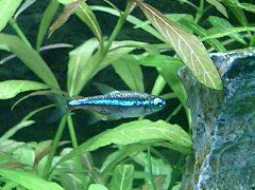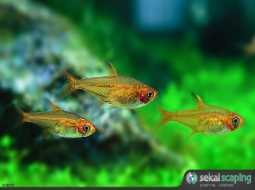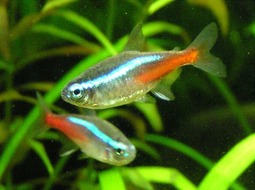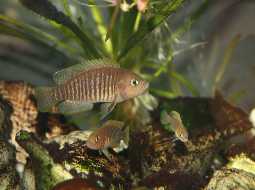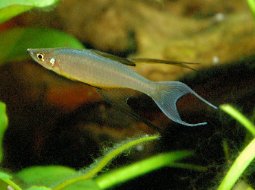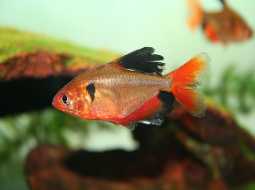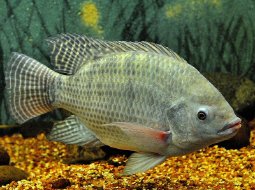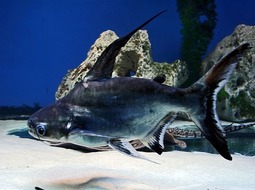
Loading Aqualapp ...
Care and Compatibility of Red Terror Fish - Mesoheros festae
Introduction
The Red Terror Fish is a medium to large-sized fish with a robust body and striking coloration. It has a pattern of intense red horizontal stripes throughout its body, contrasting with darker tones towards the back. Its fins are long and pointed, and they can display bright colors along the edges.
Behavior
The Red Terror Fish, also known as Mesoheros festae, is a freshwater fish native to the Ecuadorian river basin. It gets its name due to its intimidating and aggressive appearance. They are territorial fish and can display territorial and aggressive behaviors towards other fish of the same species or different species.
Sexual Dimorphism
Sexual dimorphism in Mesoheros festae is evident. Males are usually larger and have more intense colors and a larger head, while females are smaller and less colorful.
Reproduction
Breeding Red Terror Fish can be challenging in captivity due to their territorial aggression. To breed them, it is recommended to provide them with a large tank with separate areas for the pair and suitable substrate for egg deposition. The female will lay her eggs on a flat surface, and the male will fertilize them. The parents should be separated after breeding to prevent egg or fry cannibalism.
Aquarium Conditions
Mesoheros festae, commonly known as the red terror cichlid, requires a large, well-decorated aquarium with hiding spots and rocks to form structures. It prefers slightly alkaline water and a warm temperature. Aquarium décor should include stacked rocks and hardy vegetation. Maintaining water quality is crucial and providing a balanced diet.
Feeding
When it comes to feeding, the Red Terror Fish is carnivorous. It primarily feeds on small fish, crustaceans, and other invertebrates. In the aquarium, it can be offered a variety of live and frozen foods, such as small fish, shrimp, and insect larvae. They also accept high-quality dry foods designed for carnivorous fish.
Complexity
Caring for Mesoheros festae can be challenging. They are territorial and aggressive fish, especially during breeding season. It's recommended to keep them in pairs or in a large group in a spacious, well-decorated tank. They are omnivores and accept a variety of foods, but should be given a varied diet to maintain their health and coloration.
In case you need more help, or if you want to know into any topic related to the Mesoheros festae (Red Terror Fish) and even any other species you can use the forums to ask what you need.
To do an analysis more detailed about coexistence and behavior of Mesoheros festae (Red Terror Fish) use the Aquarium simulation tool, if you do this you can test different ways to combine the Red Terror Fish with other fishes giving the dimensions and space on you aquarium, on this way you can known the optimal configuration for keep the fishes that you want.
You can also find out the 55 species compatible with the Mesoheros festae (Red Terror Fish) can live together.
Note: The parameters of the water such as PH and temperature are also used to calculate the compatibility of the species.
Compatible species (55)
Compatible (11 Species)
Compatible without any restriction
Similar Sizes (2 Species)
They can coexist if they are the same size or very similar sizes, it does not work in all cases, there may be exceptions.
With Reservation (14 Species)
Compatible in some cases, it depends on the nature and personality of the fish.
Las especies territoriales por lo general pueden convivir con especies protegidas con coraza, ya que no pueden hacerles daño por su dura piel, lo que si hay que tener en cuenta es tener un acuario con dimensiones favorables para que cada pez pueda delimitar un territorio, ya que la mayoría de peces acorazados son también peces de fondo y les gusta estar buscando lugares donde ocultarse.
Showdown over territory (6 Species)
Fish can live together as long as the space is spacious enough to delimit a territory, otherwise there may be aggressions for competing for the territory.
Considerable size difference (16 Species)
They can coexist while they are similar in size or the size difference is not very abysmal, since as the fish grows it increases the chances of eating its partner that did not grow much.
Compatible if space is enough (6 Species)
They can coexist together if the aquarium they share is large and spacious enough for both species to feel good, as some fish may attack others to feel that they have little space and try to eliminate the competition.
Red Terror Fish
Mesoheros festae

- Ph: 6 - 7.5
- Temperature (c°): 25 - 28
- Measures: 20 cm - 50cm
- Aquarium Capacity:
250 Liters - 66 Gallons - Alimentación: Carnivores
- Colores: Black, Red
- Comportamiento: Aggressive, Territorial
- Habitad: American
- Morfología: Bright colors
- Preferencias del Acuario: Caves, Rocks
- Tamaño: Very Big
- Taxonomía: Cichlids, Fish
- Tipo de Agua: Sweet water, Tropical waters
- Velocidad de nado o movimiento: Normal
- Zona de Nado: Swim in the middle of the aquarium



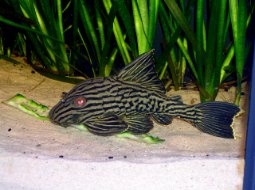

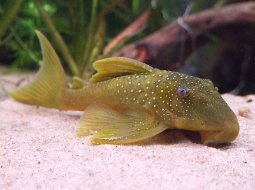

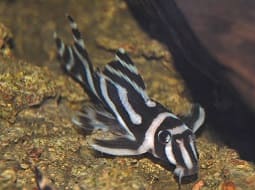

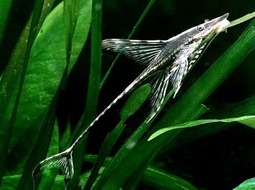
.jpg)

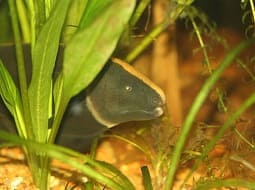




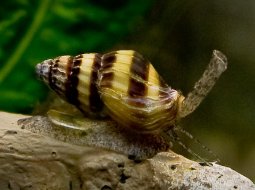

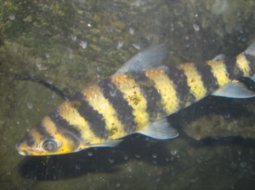
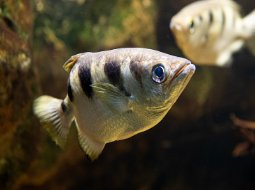
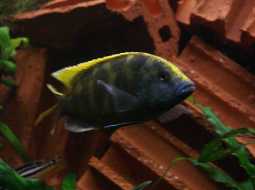






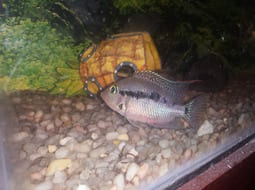

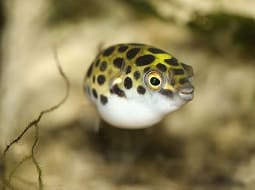
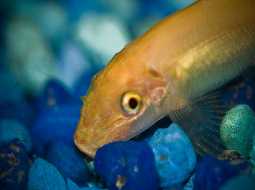
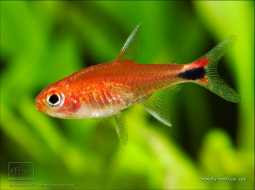


.jpg)

